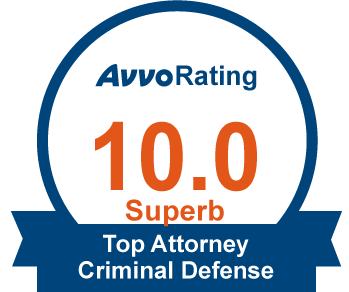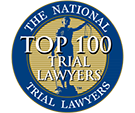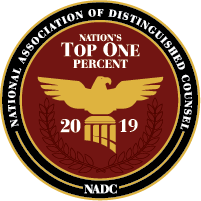Fighting drug crime charges in California is no easy feat. With laws that range from possession and distribution to the intricacies of medical marijuana regulations, there are a lot of details you need to understand. Whether you or a loved one is facing charges related to controlled substances, elements of California drug laws require skilled legal guidance.
At the Law Offices of Anna R. Yum, we specialize in providing comprehensive legal representation for those accused of drug offenses in San Diego. Our expertise in drug laws ensures that our clients receive solid defense strategies tailored to their needs. So, if you are facing drug charges and need expert legal assistance, contact us for a consultation.
Free Consultation (619) 233-4433
The Meaning of Drug Crimes Under California Law
In California, drug crimes encompass offenses involving controlled substances. Controlled substances are drugs and chemicals regulated by the government due to their potentially harmful effects on health and welfare when illicitly produced or misused. The Controlled Substances Act, enforced by the Drug Enforcement Administration (DEA), provides for these offenses.
Schedule 1 Drugs
Schedule 1 drugs are deemed the most dangerous, primarily due to their high abuse potential and lack of recognized medical use in the US. This category includes substances like:
- Heroin
- Lysergic acid diethylamide (LSD)
- Ecstasy (MDMA)
- Cannabis (marijuana)
The law views these drugs as having a higher likelihood of leading to psychological or physical dependence. Possession, manufacture, or distribution of Schedule 1 drugs often results in severe legal consequences, as explained in the sections below.
Schedule 2 Drugs
These substances also have a high potential for abuse. However, these differ from Schedule 1 drugs in that they have some legal medical purposes, albeit with severe restrictions. Examples include the following:
- Cocaine
- Methamphetamine
- Hydromorphone (Dilaudid)
- Methadone
- Oxycodone (OxyContin)
- Meperidine (Demerol)
- Fentanyl
Despite their medical uses, the risk of severe psychological or physical dependence remains high. Crimes involving Schedule 2 drugs can lead to serious legal ramifications, although these depend on the nature of the crime, for example, possession vs. trafficking.
Schedule 3 Drugs
A moderate-to-low potential for psychological and physical dependence characterizes Schedule 3 drugs. These drugs have a higher acceptance for medical use compared to Schedule 1 and 2 drugs.
This category comprises substances like anabolic steroids, testosterone, ketamine, and certain barbiturates. Legal offenses involving Schedule 3 drugs are generally considered less serious than those involving Schedule 1 or 2 drugs, but they still carry significant legal consequences, particularly for trafficking or illegal distribution.
Schedule 4 Drugs
Drugs in this category have a low potential for abuse and a low risk of dependence. Schedule 4 drugs include many prescription medications used to treat anxiety, insomnia, and other conditions.
Common examples include the following:
- Xanax (alprazolam)
- Valium (diazepam)
- Ativan (lorazepam)
- Ambien (zolpidem)
While these drugs are medically useful and widely prescribed, illegal possession, distribution, or use can lead to criminal charges, although less severe than those for higher-schedule substances.
Schedule 5 Drugs
Schedule 5 drugs represent the lowest potential for abuse relative to the substances listed in the other schedules. They typically contain limited quantities of certain narcotics and are often used for antidiarrheal, antitussive (cough suppression), and analgesic (pain relief) purposes.
Below are examples of Schedule 5 drugs:
- Cough preparations containing less than 200 milligrams of codeine per 100 milliliters, for example, Robitussin AC.
- Preparations containing small amounts of certain narcotics.
Legal issues surrounding Schedule 5 drugs arise from improper prescriptions or unauthorized possession, with penalties generally being less severe than for higher-schedule drugs.
Types of Drug Crimes in California
In California, drug charges fall into three primary categories, each with specific elements and potential penalties:
- Possession of Drugs
To charge you with drug possession, the prosecutor must prove you possessed a controlled substance knowingly and that the substance amount was usable without a valid prescription.
The sentence for drug possession depends on the type and amount of the drug, with simple possession often charged as a misdemeanor. First-time offenders might face a fine or up to one year in jail, or some may qualify for drug diversion programs instead of jail time.
- Distribution of Drugs
This encompasses selling, furnishing, administering, transporting, or importing controlled substances, including prescription drugs. To charge you with drug distribution, the prosecution must provide evidence such as a large amount of the substance, packaging materials, large cash sums, or drug paraphernalia at the arrest site.
Sentencing depends on factors like the drug type and amount, minors’ involvement, and the transaction location. Penalties range from three years to life in prison, depending on these factors.
- Manufacture of Drugs
Manufacturing drugs is a felony, including producing, compounding, processing, or cultivating any controlled substance. Charges extend to those supplying chemicals and equipment for drug production.
The prosecution must prove possession of the necessary components and intent to manufacture. Penalties can be severe, including up to $50,000 in fines and up to 7 years in prison, which may increase based on the manufacturing scale and if any harm occurs during the process.
Health and Safety Code 11350, Possession of a Controlled Substance
Health and Safety Code 11350(a) criminalizes the unlawful possession of controlled substances, which includes illegal narcotics and legal prescription drugs without a doctor’s prescription. It is commonly referred to as “simple possession” or “possession for personal use.”
Before the court can sentence you, the prosecutor must prove the following key elements:
- You possess a controlled substance
- You lack a valid prescription for the substance
- You had Knowledge of the substance’s presence
- You were aware of the substance’s nature as a controlled substance
- The substance amount was usable
HS 1350(a) is charged as a misdemeanor. An HS 1350(a) violation is punishable by up to a one-year jail term or a fine not exceeding $1,000. However, under certain circumstances, such as a prior conviction for a sex crime or a serious felony, possession can be prosecuted as a felony, leading to up to three years in jail.
If you are eligible, you might qualify for drug diversion (treatment) programs or drug courts, allowing you to serve your sentence in a treatment program instead of jail or prison.
Health and Safety Code 11351, Possession of a Controlled Substance with Intent to Sell
Under California HS 11351, it is a felony to possess a controlled substance with the intent to sell. HS 11351 applies to a range of illicit street drugs like cocaine, heroin, and LSD, as well as common prescription drugs such as oxycodone, hydrocodone, and codeine.
The prosecution must prove several elements to secure your conviction. These elements include the following:
- You possessed or purchased the drug
- You knew about the drug or purchased it
- You were aware of the drug’s nature as a controlled substance
- You possess enough drugs to use or sell
- You had the intent to sell the drug or purchased the drug with the intent to resell
A conviction can result in probation and up to a year in jail, or a two- to four-year jail term or a fine not exceeding $20,000.
Health and Safety Code 11352, Selling or Transporting a Controlled Substance
California HS 11352 makes it a felony offense to sell, transport, furnish, administer, or import a controlled substance. HS 11352 covers various illegal activities associated with controlled substances in California.
You could face a conviction if the prosecutor proves the following:
- You sold, furnished, administered, gave away, transported for sale, imported into California, or offered to perform any of these acts with a controlled substance
- You were aware of the substance’s presence
- You knew its nature as a controlled substance
- The substance amount was usable, especially in cases involving transportation for sale
Possible sentencing for a first offense include:
- Felony probation
- Three, four, or five years in jail
You would face a three-, six-, or nine-year prison term if you transported the controlled substances for sale across two or more counties in California and a fine of no more than $20,000.
Health and Safety Code 11379.6, Manufacturing Drugs, Narcotics, and Controlled Substances
Health and Safety Code 11379.6 prohibits the manufacturing, compounding, converting, producing, deriving, processing, or preparing, either directly or indirectly, by chemical extraction or synthesis of any controlled substance. This includes both illegal drugs and prescription medications manufactured without a valid license.
Elements of the crime the prosecution must prove in court before the judge can convict you are:
- You engaged in some activity that resulted in the creation or alteration of a controlled substance.
- The substance involved must be listed as a controlled substance under state or federal law.
- You knew that the substance you were manufacturing was a controlled substance.
- You intended to manufacture a controlled substance.
Violating HS 11379.6 results in a felony charge. A conviction under this statute carries a potential sentence of 3, 5, or 7 years in state prison. The judge could impose a fine not exceeding $50,000.
The court could enhance the penalties if certain factors are present, such as:
- The amount of controlled substances involved
- The type of controlled substance involved
- Whether the defendant has prior drug convictions
- Whether the manufacturing operation was conducted near a school or other sensitive location
Health and Safety Code 11550, Under the Influence of Drugs
Health and Safety Code 11550 criminalizes using or being under the influence of a controlled substance without a valid prescription. Controlled substances covered by this statute include commonly prescribed medications that are also abused, including:
- Zoloft
- Hydrocodone
- codeine
- Oxycodone
- Illegal substances like heroin, cocaine, amphetamine, MDMA, LSD, and certain steroids
To secure a conviction under this statute, the prosecutor must prove the following elements:
- You willfully used a controlled substance or narcotic drug
- You were willfully under the influence of this substance or drug
The term “willfully” implies that the use was intentional and knowing. The complaint must specify the particular drugs you were allegedly under the influence of.
A violation of HS 11550 is classified as a misdemeanor. Possible penalties include imprisonment in jail for 180 days or not more than one year. The judge may grant misdemeanor probation instead of jail time. The court has the discretion to impose probation of not more than five years, often conditioned upon attendance at Narcotics Anonymous meetings or similar rehabilitation activities.
Health and Safety Code 11362.3, Marijuana Offenses
Health and Safety Code 11362.3 makes it illegal to use marijuana in public or to have an open container of marijuana in a vehicle. Despite the legalization of recreational cannabis for adults, this statute imposes certain restrictions.
The specific prohibitions under this statute include:
- Smoking or ingesting marijuana in public places, except as permitted by specific codes.
- Smoking cannabis in locations where smoking tobacco is prohibited.
- Smoking cannabis within 1,000 feet of a school, daycare center, or youth center when children are present.
- Possessing an open container or package of cannabis in a vehicle.
- Smoking or ingesting cannabis on the grounds of a school, daycare center, or youth center when children are present.
- Manufacturing concentrated cannabis using a volatile solvent without a license.
- Smoking or ingesting cannabis while driving, operating, or riding as a passenger in any vehicle.
Violations of HS 11362.3 are typically misdemeanors, carrying fines for first-time offenses. Juveniles under the age of 18 may be cited for an infraction and ordered to undergo rehabilitation and community service.
What is California’s Proposition 36?
California’s Proposition 36, also known as the “Substance Abuse and Crime Prevention Act of 2000,” is a law that was passed to amend California’s legal approach to certain nonviolent drug offenses.
Under Proposition 36, perpetrators convicted of nonviolent drug possession crimes are often eligible for probation with the condition of undergoing drug treatment rather than serving time in jail.
This initiative represents a shift towards treating drug addiction as a public health issue rather than strictly a criminal matter. The aim is to offer rehabilitation and treatment for drug offenders as an alternative to incarceration in the hope of reducing drug-related crime and recidivism rates.
The Definition of “Nonviolent Drug Offenses” Under Prop. 36
California’s Proposition 36 defines “nonviolent drug possession offenses” as including the unlawful use, being under the influence, possession, or transportation for personal use of any drugs listed in the United States “Controlled Substances Act.”
This includes, but is not limited to, drugs like cocaine, heroin, peyote, GHB, ecstasy, ketamine, marijuana, methamphetamines, certain hallucinogenic substances, and even some prescription drugs like codeine and hydrocodone.
Specifically, Proposition 36 requires that first- and second-time offenders sentenced for nonviolent drug possession crimes undergo up to twelve months of substance abuse treatment instead of jail or prison time.
This period can be extended by up to two additional six-month periods if necessary. Proposition 36 also applies to parolees who violate their parole by committing a nonviolent drug possession offense or violating a drug-related condition of parole.
Other Restrictions On Proposition 36 Eligibility
California’s Proposition 36, while offering opportunities for treatment instead of incarceration for nonviolent drug offenders, sets specific eligibility criteria and restrictions, for example:
- Prior “Strike” Convictions
If you are previously convicted of a serious or violent felony (strikes under California’s Three Strikes Law), you are ineligible unless the nonviolent drug crime happened not later than five years after your last release from prison and your last felony or misdemeanor conviction involving bodily harm or the threat of bodily harm to someone else.
- Simultaneous Non-Drug-Related Conviction
Those sentenced in the same proceeding for a non-drug misdemeanor or felony are ineligible. This includes misdemeanors unrelated to drug use, for example, DUID (driving under the influence of drugs), as such offenses are considered more serious.
- Armed with a Deadly Weapon
If you are armed with a deadly weapon such as a gun or another firearm during the commission of a nonviolent drug offense, you are disqualified.
- Refusal of Drug Treatment
Eligibility requires agreeing to drug treatment as a probation condition. Refusal to accept treatment disqualifies you from Proposition 36 sentencing.
- Previous Participation in Prop. 36 Programs
Those who have already participated in two Proposition 36 programs and are deemed amenable to undergo drug treatment are ineligible and may face a minimum jail sentence of 30 days.
Can One Fight an Allegation and Still Do Proposition 36 if They Lose?
You can fight your case and still opt for Proposition 36, even after you lose. Under Prop. 36, you are allowed to plead not guilty and contest your charge in court. If the court finds you guilty or pleads no contest to a nonviolent drug possession offense, you could still be eligible for Prop 36’s drug treatment program instead of incarceration, as long as you meet the criteria for Prop 36 eligibility. This approach allows defendants to exercise their right to a fair trial without forfeiting the opportunity for treatment under Prop. 36.
Alternative California Drug Diversion Programs
California offers several drug diversion programs as alternatives to conventional sentencing for drug-related offenses. Two key programs are the California Penal Code 1000 PC deferred entry of judgment and California drug courts.
California Penal Code 1000 PC: Deferred Entry Of Judgment
This program involves entering a guilty or no contest plea initially, but the judge defers conviction while you complete probation. If probation is completed and you stay out of trouble, the judge dismisses the case, thus avoiding a conviction on the criminal record.
If you do not complete probation, the judge can sentence you to the maximum term for the charged offenses. It is typically applicable in non-violent misdemeanor cases. Felonies can sometimes be reduced to misdemeanors through this program.
Probation terms often include drug treatment, drug testing, counseling, and community service. An alternative to this program is pretrial diversion, where no initial plea is entered. You can also request deferred adjudication from the superior court judge.
California Drug Courts
California drug courts provide nonviolent drug offenders with the chance to resolve their cases outside the traditional criminal justice system, focusing on individuals who may benefit from drug rehabilitation.
Participants in drug courts typically need to engage in individual and group counseling, drug education, and educational or vocational counseling where appropriate. They are also required to do the following:
- Undergo drug testing
- Seek or maintain employment
- Attend school
- Dress appropriately for court
- Meet regularly with a probation officer
- Fulfill any other court-mandated requirements
Successful completion of a drug treatment program in these courts often results in the dismissal of criminal charges. These programs reflect California’s progressive approach to drug-related offenses, emphasizing rehabilitation and recovery over punitive measures. They aim to address the underlying issues of drug abuse by offering a path to recovery and reducing the likelihood of reoffending.
Common Defenses For Drug Crimes
In California, common legal defenses for drug crimes encompass various strategies, depending on the specifics of the case. They include:
- Lack of possession. Arguing that you did not actually possess the controlled substance, either because it belonged to someone else or because you were unaware of its presence.
- Invalid search and seizure. This involves challenging the legality of how the evidence was obtained, asserting that law enforcement violated the defendant’s Fourth Amendment rights.
- Medical necessity or valid prescription. You could demonstrate that you had a valid prescription or a legitimate medical need for the controlled substance.
- Entrapment. You could claim that law enforcement induced the defendant to commit a crime they would not have otherwise committed.
- Lack of knowledge. You could argue that you were unaware of the nature of the substance, thereby lacking the intent necessary for a conviction.
Finding a Drug Crime Attorney Near Me
Facing drug charges in California can significantly impact your life, but you do not have to navigate this challenging journey alone. At the Law Offices of Anna R. Yum, we are committed to defending your rights and fighting for a favorable outcome. With our expertise in California drug laws, we can provide the strong legal representation you need. If you or a loved one is facing drug offense charges in San Diego, contact us at 619-493-3461 to discuss your case and legal options.











